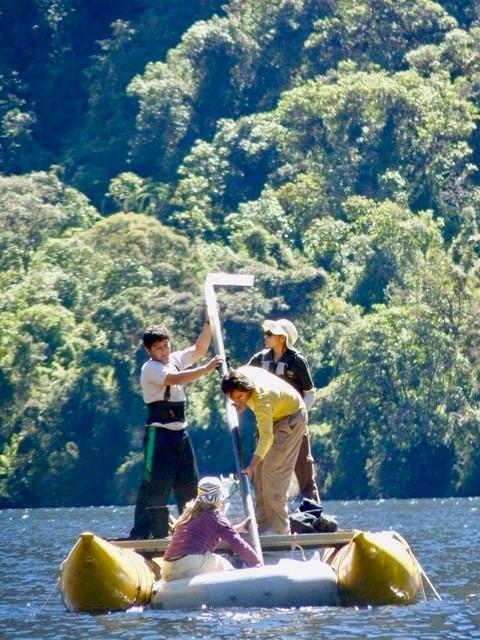Sediment samples show recovery from some ecosystem damage possible

Credit: Florida Tech
MELBOURNE, FLA. — New research led by scientists from Florida Institute of Technology found that the strong and long-lasting droughts known as megadroughts parched the usually moist Peruvian cloud forests, spurring farmers to colonize new cropland.
The study, “2,100 years of human adaptation to climate change in the High Andes,” reveals that Andean climate changes – especially droughts – over the last 2,100 years were an important determinant of how land was used by native Andean societies. It was published online Dec. 9 in Nature Ecology and Evolution from scientists at Florida Tech, University of Miami and Columbus State University.
The setting of the study is the Laguna de los Cóndores, or Lake of the Condors, in Peru. This is an especially important area to archaeologists as the cliffs above the lake were a tomb-site for over 200 Incan and pre-Incan mummies.
One of the key findings of the study was that the peak of deforestation was about 800 A.D. and that the last deforestation to produce maize agriculture was about 1100 A.D. The farming ended by about 1200 A.D. and the forests reclaimed the valley around the lake. This timing coincided with two things: a wetter regional climate and the beginning of the cliff burials.
“As the landscape changed from a patchwork of maize fields and disturbed forests back to cloud forest, we saw an end to burning and an almost immediate improvement in the lake’s water quality,” said Mark Bush, professor of biology at Florida Tech and the team leader. “This recovery offers us the hope that some of the bad ecosystem impacts from deforestation and grazing in the Andes are reversible.”
But the study also shows that the projected increased droughts resulting from modern climate change in the Andes are likely to cause farmers to deforest and exploit cloud forest regions.
A grant to Bush from the National Geographic Society funded the fieldwork, and follow-up laboratory funding was provided by grants from the National Science Foundation and NASA.
The analysis of sediments recovered from the bottom of the lake provided multiple lines of evidence that included fossil pollen, charcoal and algae, and sediment chemistry. Data from these sources allowed the team to reconstruct an almost year-by-year history of the land use around the lake spanning the last 2,100 years. Multiple cycles of farming activity followed by abandonment aligned to changing climates were recorded, as were five megadroughts.
Each drought lasted for as much as a decade, and each time farmers exploited the valley. Between these dry periods, under the more normal, wetter conditions, the valley was largely abandoned, and forests regrew.
“We were surprised to see how responsive these populations were to climate change,” said Christine Åkesson, who conducted the study as a Ph.D. student at Florida Tech and is the lead author of the paper. “We expected to see a steady rise in land use peaking with the internment of mummies in the cliffs and the collapse of Incan society when the Spanish conquered this part of Peru in the 1570s, but that isn’t what happened.”
###
Media Contact
Adam Lowenstein
[email protected]
321-674-8964
Original Source
https:/
Related Journal Article
http://dx.




